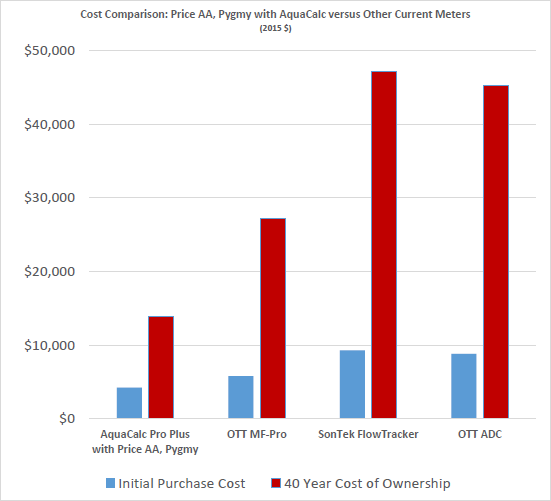 Loading... Please wait...
Loading... Please wait...Hydrological Equipment
NEWS RELEASE
Cost and Accuracy Comparisons

Mechanical Current Meter System with AquaCalc Versus Other Point Velocity Discharge Systems
Download PDF
Water Quality
Water quality can be assessed by examining the physical, chemical and biological characteristics of a particular body of water. Samplers allow water to be collected from various specific locations, depths or simple grab samples for analyzing in the lab or for on-site analysis. Often water quality parameters can be evaluated at a gaging station continuously and recorded with a data logger.
Common water quality parameters to be measured and recorded by hydrologists include temperature (° C), conductivity or specific conductance, dissolved oxygen (µg/L), pH, turbidity (suspended matter), salinity, biochemical oxygen demand (BOD) as well as total dissolved solids (TDS) and its specific components such as sulfates, nitrates, calcium, etc.
Physical and chemical characteristics can be evaluated by instruments that continuously monitor and record these properties or by spot checks when the hydrologist is on site making measurements. Three basic types of water quality meters are used for on-site measurements. We have selected the best available and commonly used instruments by the USGS, USEPA, and other major state and federal agencies.
Single parameter water quality meters allow the hydrologist to take quick, accurate measurements in the field. These meters can have a probe with cable from the water into the stream or lake or have a cup in the meter to hold a sample which is poured into the analyzer. Also these can be used with a flow through chamber for multiple meters to analyze a sample pumped through it.
Multi-parameter water quality meters offer the advantage of one meter which can simultaneously monitor several parameters at once from a hand-held meter with probe suspended by cable from the meter.
A Sonde type multi-parameter meter is deployed in the river or lake for short or long term recording.
A multi-channel data logger at the gaging station can be equipped with water quality sensors that can be deployed in the river with cable running to the datalogger in the gage house. Often a flow-through chamber is installed in the gage house and the probes mounted in the chamber and connected to the data logger.
